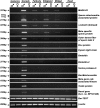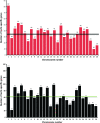The silkworm Z chromosome is enriched in testis-specific genes
- PMID: 19332883
- PMCID: PMC2691758
- DOI: 10.1534/genetics.108.099994
The silkworm Z chromosome is enriched in testis-specific genes
Abstract
The role of sex chromosomes in sex determination has been well studied in diverse groups of organisms. However, the role of the genes on the sex chromosomes in conferring sexual dimorphism is still being experimentally evaluated. An unequal complement of sex chromosomes between two sexes makes them amenable to sex-specific evolutionary forces. Sex-linked genes preferentially expressed in one sex over the other offer a potential means of addressing the role of sex chromosomes in sexual dimorphism. We examined the testis transcriptome of the silkworm, Bombyx mori, which has a ZW chromosome constitution in the female and ZZ in the male, and show that the Z chromosome harbors a significantly higher number of genes expressed preferentially in testis compared to the autosomes. We hypothesize that sexual antagonism and absence of dosage compensation have possibly led to the accumulation of many male-specific genes on the Z chromosome. Further, our analysis of testis-specific paralogous genes suggests that the accumulation on the Z chromosome of genes advantageous to males has occurred primarily by translocation or tandem duplication.
Figures




References
Publication types
MeSH terms
LinkOut - more resources
Full Text Sources

